Hedge joins the Netflix Production Technology Alliance

This week marks an important milestone for our industry: Netflix's Production Technology Alliance program has added a category for data management. Meet Production Data Management.
As this is an alliance, the program isn't just about recommending hardware or software for use; it's about driving innovation and efficiency. In the Production Data Management field, dominated by a handful of players, there is no such thing as an "industry standard". With the Production Technology Alliance in place, we now have a set of ground rules which should lead to preventing both congruence bias and confirmation bias when new technologies are born. These ground rules enforce interoperability, and that should make it easier for competition to enter the field — to foster innovation.
Of course, Netflix launched the Production Technology Alliance to ensure that technologies meet the evolving needs of Netflix productions. But, this effort is impactful to the entire industry, including those not working on Netflix shows. By using the tools of the trade that are officially recognized by the Production Technology Alliance, filmmakers can draw a line in the sand on what works and what doesn't. That doesn't mean productions should stick to only using what the program vets. Au contraire.
Innovation and art are defined by using new and unproven technology. With a Netflix program in place, a producer at least now knows which moving parts of a production may have a trade-off between art and risk, and can make an educated guess whether it's worth crossing that line in the sand, and where to do so.
Let's have a look at those ground rules:
Media Hash Lists
The American Society of Cinematographers (ASC) is working on the next evolution of Media Hash Lists. When the new standard, dubbed ASC-MHL, is adopted widely it will push the industry towards a future of zero vendor lock-in and full inter-operationability between off-the-shelf software, homebrew, and in-house solutions. That's a great thing, if you ask us.
Until the ASC-MHL spec is officially released, Hedge uses the original MHL standard. MHLs are created by default on each destination, but always be sure to check if your Hedge has the option enabled, in Preferences > Transfers.

Organization
Netflix's minimum required folder structure is simple and elegant:
Show Title/Shoot Date/Media Folder/Roll Folder
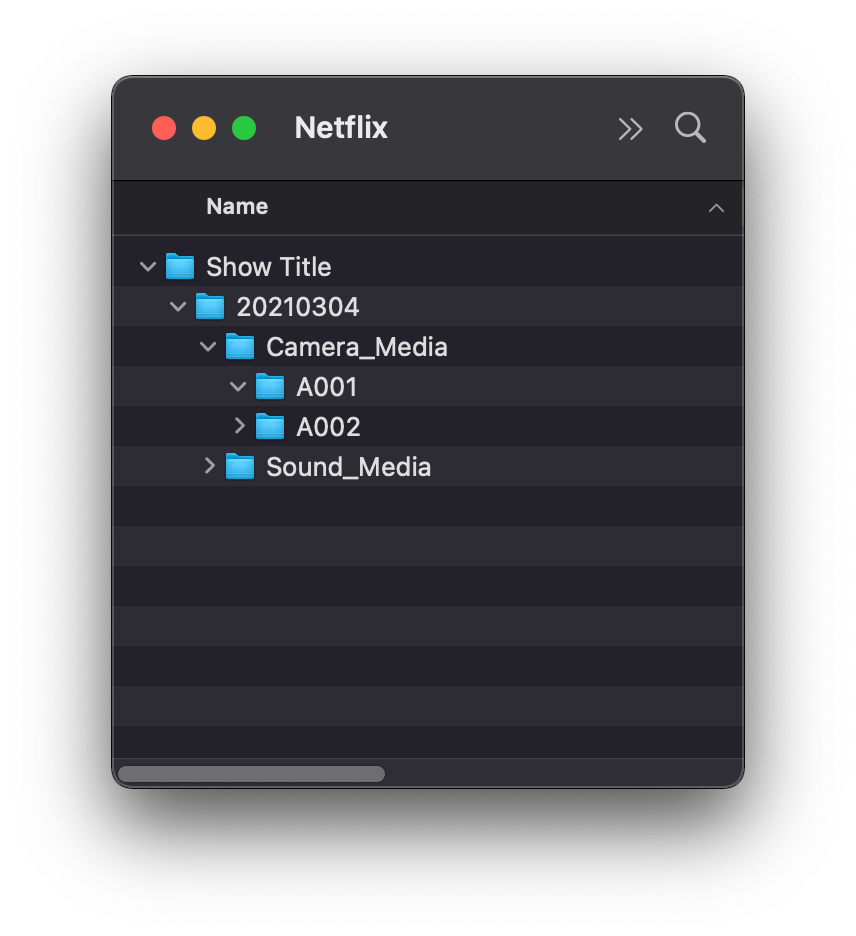
Best practice is to create a folder on your Destinations for each show, named after the Show Title, say "Stranger Things".
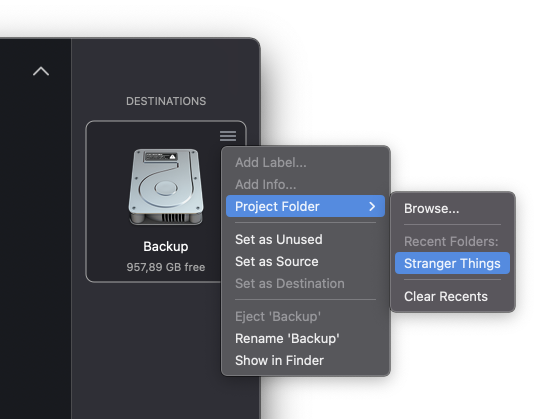
If you have purchased Hedge's Source Review add-on, {Show Title} can be part of your folder structure which Hedge will ask you about when adding a source.
The next folder contains the shoot date, and nothing else, in the YYYYMMDD format. New day? New folder. This folder can automatically be generated by Hedge's organization settings, and saved in a preset. An upcoming feature is that you'll be able to offset the current date in Hedge so that a 2AM offload still counts as the previous day.
Next up are two static folders named Camera_Media for OCF and Sound_Media for, you guessed it, audio files. We suggest to create two presets to manage a mix of OCF and Sound throughout the day - one for OCF, and one for Sound. Don't use options like Flatten Folders as Netflix requires the card structure to stay intact.
The example presets shown are available for download:
👉 Netflix Presets for Hedge

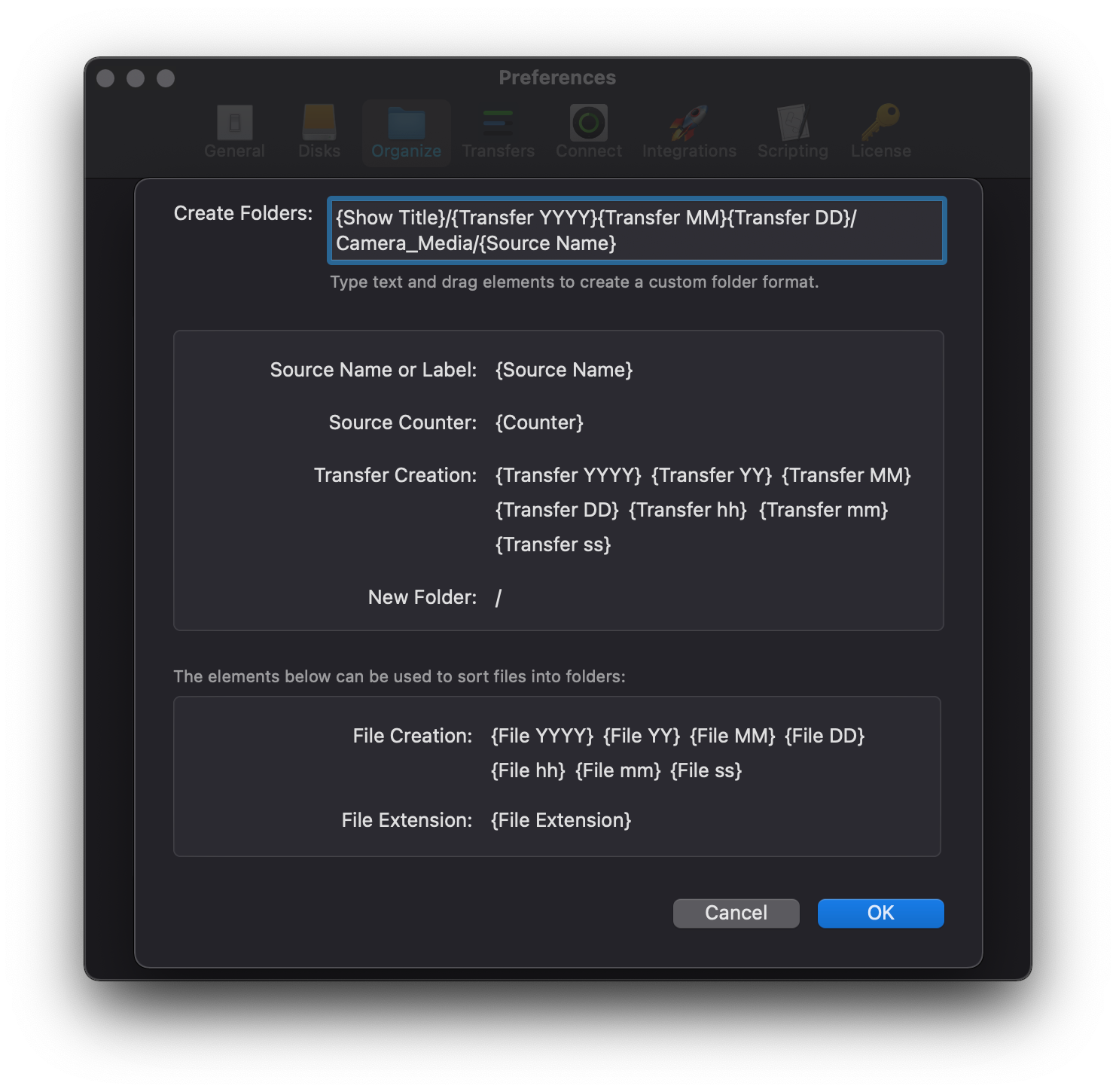
The last folder in the preset is your source, aka the Roll Folder. Most professional cards will have a roll number included in the volume name, but if not, you can easily set a label by clicking a source's name.
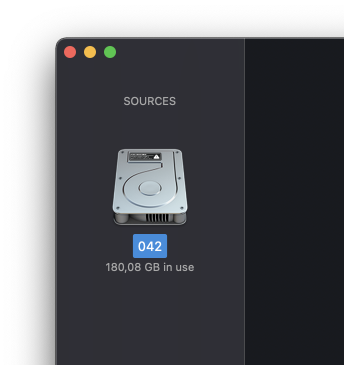
Want to automate this? Use a Counter in your preset.
File Names
Currently, Netflix does not accept localized filenames, spaces, and other symbols. The only allowed characters in filenames are a-z , A-Z, 0-9, ., _, and -.
Most camera manufacturers adhere to this already, but if not, Hedge's renaming options lets you easily enforce this. Best practice is to rebuild a filename based on the source name, a timestamp, and/or a counter.
Checkpoint Archive
With Netflix's "3:2:1" policy in mind, and knowing that generally source media is wiped as soon as possible to be able to reuse those cards, every Netflix copy should be considered an independent archive. Especially when your third copy is an LTO, don't use a source card to go directly to tape: you'll be wanting to be able to correct for source verification issues, and due to LTO's write-once nature that doesn't work for a 3:2:1 workflow. Always use an intermediate as the tape source, and as such that intermediate should be considered an archive.
With Hedge's unique MHL Awareness feature, creating the 2nd and 3rd archive will be faster as the source doesn't have to be reread - the original checksums are stored in the first MHL made, and reused.
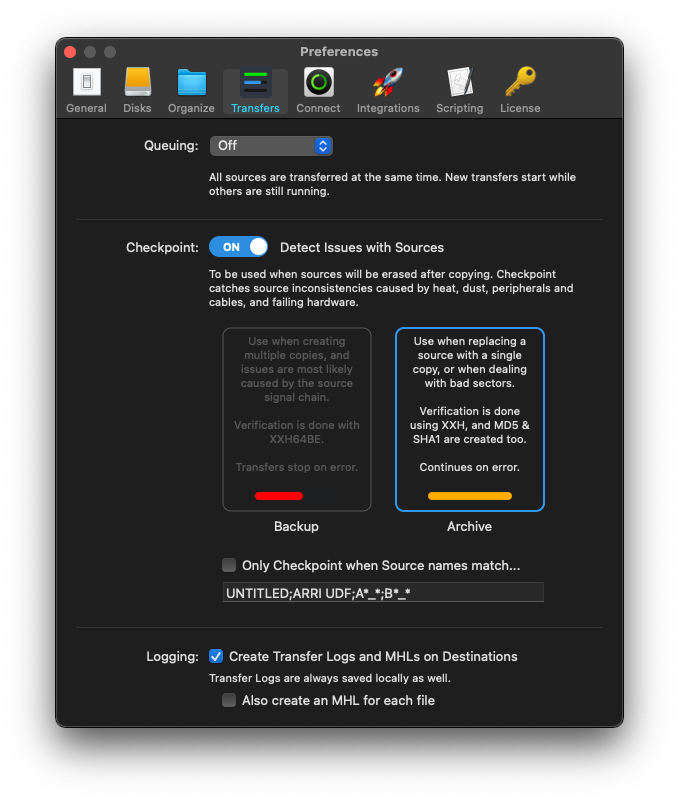
Visual Inspection
Hedge doesn't offer a way to inspect media during offload. In the near future, we'll be releasing our new Clip Review feature which will allow you to review clips and add metadata during offloads. Until then, we suggest using a dedicated player like Video Village's excellent Screen.
For full details have a look at Netflix's specs. It's worth a read:

